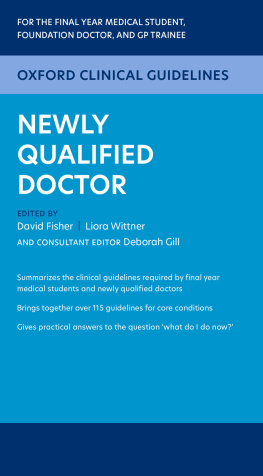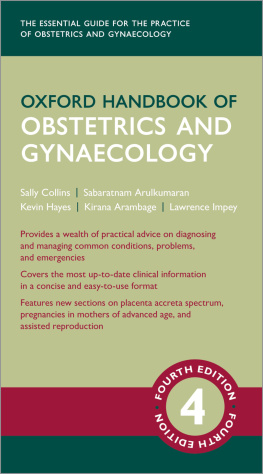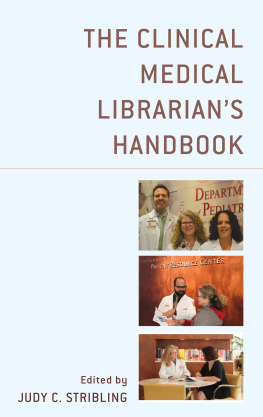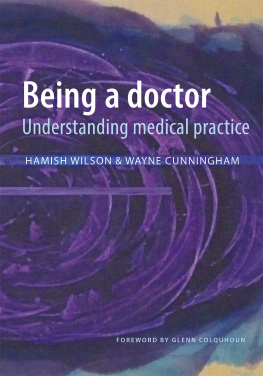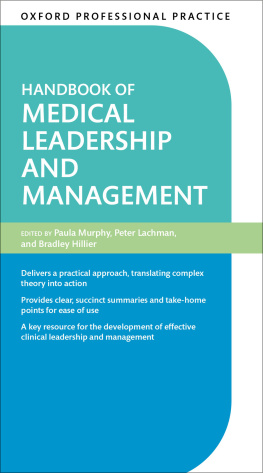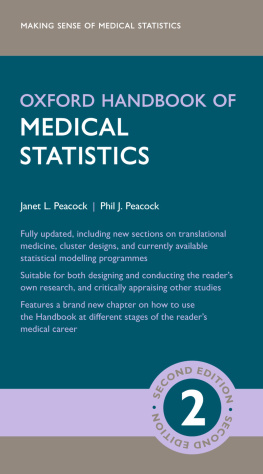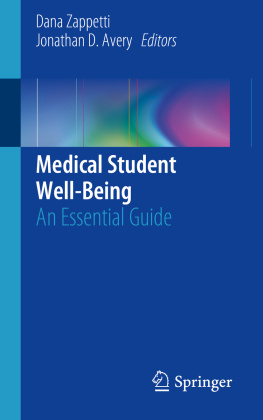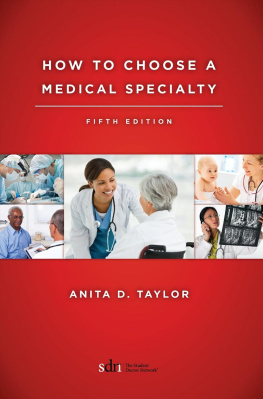OXFORD CLINICAL GUIDELINES
Newly Qualified Doctor

Great Clarendon Street, Oxford, OX2 6DP,
United Kingdom
Oxford University Press is a department of the University of Oxford.
It furthers the Universitys objective of excellence in research, scholarship, and education by publishing worldwide. Oxford is a registered trade mark of Oxford University Press in the UK and in certain other countries
Oxford University Press 2023
The moral rights of the authors have been asserted
First Edition published in 2023
All rights reserved. No part of this publication may be reproduced, stored in a retrieval system, or transmitted, in any form or by any means, without the prior permission in writing of Oxford University Press, or as expressly permitted by law, by licence or under terms agreed with the appropriate reprographics rights organization. Enquiries concerning reproduction outside the scope of the above should be sent to the Rights Department, Oxford University Press, at the address above
You must not circulate this work in any other form
and you must impose this same condition on any acquirer
Published in the United States of America by Oxford University Press
198 Madison Avenue, New York, NY 10016, United States of America
British Library Cataloguing in Publication Data
Data available
Library of Congress Control Number: 2021947301
ISBN 9780198834502
eISBN 9780192571434
DOI: 10.1093/med/9780198834502.001.0001
Oxford University Press makes no representation, express or implied, that the drug dosages in this book are correct. Readers must therefore always check the product information and clinical procedures with the most up-to-date published product information and data sheets provided by the manufacturers and the most recent codes of conduct and safety regulations. The authors and the publishers do not accept responsibility or legal liability for any errors in the text or for the misuse or misapplication of material in this work. Except where otherwise stated, drug dosages and recommendations are for the non-pregnant adult who is not breast-feeding
Links to third party websites are provided by Oxford in good faith and for information only. Oxford disclaims any responsibility for the materials contained in any third party website referenced in this work.
Preface
Evidence-based guidelines have played an increasing role in medical practice in recent years. Healthcare professionals use guidelines to contend with the overwhelming wealth of available information and to translate scientific advances and new knowledge into safe clinical care.
The popularity of clinical guidelines has led to an exponential rise in guidelines being created since the 1980s and modern healthcare professionals are expected to be familiar with them. The General Medical Councils (GMC) Good Medical Practice guidance, which records what is expected of every GMC-registered doctor, states: You must be familiar with guidelines that affect your work. Such a directive is challenging to uphold. First, the range of available guidelines in every speciality is vast and constantly expanding. Furthermore, individual guidelines can be dense and lengthy, and are therefore impractical to comb through for a professional wishing to acquaint themselves quickly with current clinical approaches.
This publication seeks to address that challenge. Written by junior doctors, each chapter summarizes the key clinical evidence-based guidelines which shape UK practice and presents the information in an accessible and concise format. Where relevant, chapters provide brief additional contextual points in order to explain the guideline for those less familiar with the field. Junior doctors, in particular foundation doctors, will find this resource useful to rapidly familiarize themselves with the latest clinical guidelines for the commonest conditions that they encounter in both primary and secondary care. Students will find this book useful as a quick reference guide to better understand the patient journey. They can also use it as a revision aid, as knowledge of guidelines is increasingly tested in medical school examinations.
Reading and learning every clinical guideline that is relevant to junior doctors is an arduous and almost impossible task. We hope that this book helps to bridge the gap and makes clinical guidelines more accessible to junior doctors, both for their benefit and also for the benefit of the patients that they treat.
Introduction: how to use this book
This book contains 123 chapters, covering a wide range of topics within internal medicine, surgery, emergency medicine, paediatrics, obstetrics and gynaecology, and psychiatry. The book is designed to cover the breadth of knowledge expected of a foundation doctor and it is pitched at this level. However, we would expect it to also be useful for medical students, specialist nurses, and junior specialist trainees (ST/CT 13 level).
This book is intended to be concise. Content which is relevant to multiple chapters will usually be noted once and other chapters will signpost to the primary mention.
Multiple guidelines exist for some topics and occasionally they conflict with each other in terms of their conclusions. It can be challenging for non-specialists to know which guideline they should follow. Each specialty section in this book has been overseen by at least one senior specialist consultant who has provided direction in identifying the most relevant and widely used guideline (or guidelines) to base each chapter upon. Readers should be aware that institutions often have their own local protocols which supersede the guidelines used in this publication.
The information in each chapter refers to adult patients only, except for chapters in the Resuscitation section (). Where a drug is suggested as a treatment option, any dosages mentioned assume an otherwise healthy, non-pregnant adult with normal hepatic and renal function, and of average height and weight. Exceptions include chapters dealing with obstetrics, paediatrics, elderly medicine, hepatology, and nephrology. In all cases, the most recent British National Formulary or local protocols should be consulted to verify the drug choice, dosage, and any contraindications.
This book includes some investigation and management options that should only be considered under the guidance of a senior or specialist clinician, and they are highlighted as such. It is vital that junior professionals should be aware of their own limitations and not do anything that they are not competent to do.
Finally, please note that the information contained within these pages is for educational purposes only and should not be solely relied upon to direct the management of patients. The full guidelines are referenced at the start of each chapter and can be accessed online.
Acknowledgements
First and foremost, this book would not have been possible without the hard work of each chapter contributor. We are also grateful for the dedication of the Senior Editorial Board and for all of the reviews and advice that they provided.
We are appreciative of Professor Deborah Gill for her thoughtful oversight and helpful suggestions over the course of writing this book.
We are of course indebted to the wonderful team at Oxford University Press. We are grateful to each of the project managers that we have been fortunate to work with including Sam Callard, Mark Knowles, Fiona Sutherland, and most recently Sylvia Warren.

